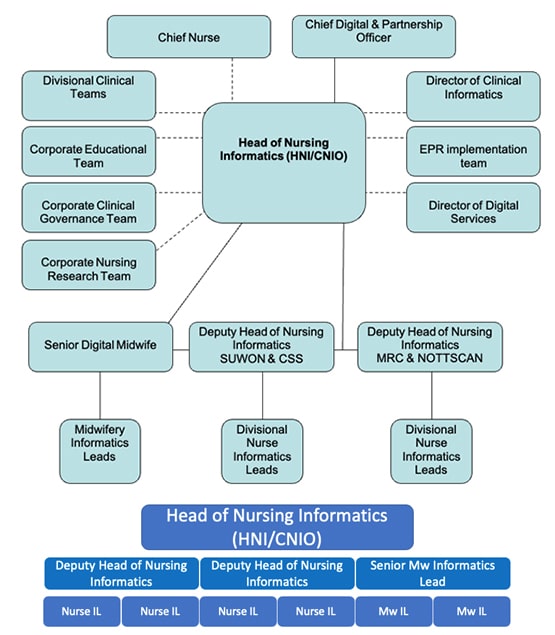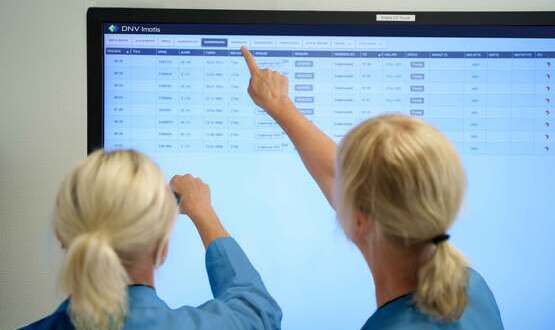What makes an effective digital NMAHP team?
- 30 May 2024

In the first of a four-part series, Simon Noel reveals why digital teams should be clinically “agnostic” and explains the benefits of collaboration
When working with clinical digital colleagues across the country, a common theme of conversation is how clinical digital teams are configured and how they are managed. It seems that the challenges are similar but there are as many models for this as there are organisations, and I am often asked what my team looks like and how this works to support nursing, midwifery and allied health professions. In this series of articles, the goal will be to show how we have evolved, how we work with both clinical and non-clinical teams, and the benefits we have seen from how our team is configured.
What’s the context?
My post was created in 2017 as part of our organisations bid to be a Global Digital Exemplar trust, and this was to be supported by two whole time equivalent band 7 nursing posts, split into four 0.5wte. We are a tertiary referral centre of over 1,000 beds over four sites with dozens of specialities.
It soon became clear, with the rapid adoption of digital workflows and the increasing dependence upon technology, that the team would need to expand and strengthen to provide the best service for our clinical teams. I therefore went about working with our senior colleagues to provide a more robust structure which would support our four clinical divisions. By doing this we were able to allocate work much more efficiently and to demonstrate that we could invest and collaborate with our senior divisional clinical colleagues.
Alongside this consolidation, we also reinforced our position within the organisation by forging close working relationships with the clinical teams, providing the bridge between technical and clinical working.
What does collaboration mean for the team?
Other than my role, we have two deputies and four band 7 digital nurses, a senior digital midwife and two band 7 digital midwives, supporting our four divisions. This team configuration has brought the benefits of a collaborative approach: we are seen as team members of both clinical and technical services.
It has been very important to look on roles within our team as clinically agnostic. We are currently nurses and midwives, but we have endeavoured to open digital lead recruitment to all nurses, midwives and AHPs. The inclusion of the midwives in the team reinforced the close working relationship with women’s services and the clinical credibility of the team. Central to the experience these staff bring is that they are clinically credible, confident with people and have clinical management experience.

Where does the team fit?
The position of the team within the organisation is critical to how it engages with technical and clinical services. Our team currently sits within digital services, and physically sits in the building where digital technical services are housed. However, we have an extremely close working relationship with our clinical colleagues and have a role on many clinical groups. We are also professionally accountable to our nursing, AHP and midwifery professional leaders. This yields significant benefits when planning implementing and adopting change, as it prevents misunderstandings and puts digital at the forefront of operational clinical planning.
In a complex and dynamic environment, this configuration is enormously helpful in providing context and promoting ownership of essential change management and clinical workflow pathways. It also allows for a responsive and dynamic approach to team development, allowing a greater understanding of clinical services and technical dependencies, and providing the team with a mutual support framework. Such support would not be available if these digital clinical resources were owned and managed within separate services.
What are the benefits?
Collaborative support provides the basis for a stable and enabled team, who can provide and benefit from informal and formal development opportunities, which in turn provides for succession planning and an enhanced clinical digital team profile. Being part of a centralised and agnostic service, encourages acceptance and enablement through continued exposure to the wider organisational context and through collaboration with multiple clinical teams.
What’s the message?
Our format may not work for everyone, but the key message is that teams integrated in this way provide positive outcomes. However, you must be mindful that the clinical focus is not blurred, muted, or lost. Appropriately skilled staff, with effective links to services, can provide increased compliance and improvements in quality, safety, and patient/staff experience.
The temptation to create and hold onto digital staffing resources within local services risks creating barriers to collaboration. If essential staff become isolated and lack exposure to the wider digital context, it will impede their development and ultimately affect their ability to grow and provide an effective service.
Key messages:
- NMAHP digital clinical staffing work and develop better when working together.
- Cross-disciplinary collaboration nurtures understanding and support.
- Isolating resources in individual services impedes development of that resource.
- The configuration of NMAHP teams should be a mix of ability and speciality.
- Successful digital deployment and integration is bigger than any single profession.





